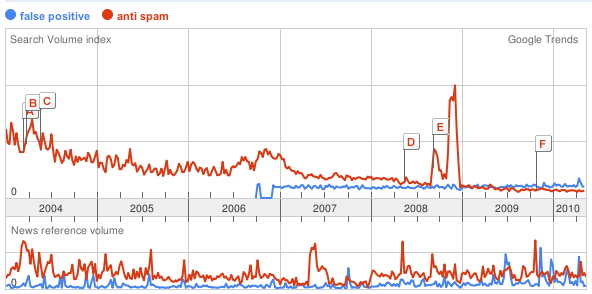There are classes of notifications. This article is about one of them – the perishable news analysis.
1999, after the acquisition of Bay Networks had been approved by the DOJ and the EU and the Canadian Government, I was a director reporting to Al Delorenzi in Business Development, on loan to the company's first and new Chief Marketing Officer, Bill Conner (now Chairman and CEO of Entrust). At around that time, John Chambers, CEO Cisco, was busy making pronouncements about their plans and visions for the service provider business.
This posturing was bold and imaginative, which in those heady days attracted lots and lots of press coverage. Our service provider sales people, who were used to bringing in billion dollar supply contracts with these carriers were terrified. Talented people were deserting, customers were pausing to consider the other guys powerpoints; was the world changing and we were out of date?
I did a couple of cool things. I gave myself the title of 'Director, Competitive Tactics', assembled an ad hoc team of specialists – a technology dude, a former Cisco sales exec and a writer who had spent his career writing and promoting Nortel Technology (formerly BNR). This small team and I would gather by conference call to create the 'TAKE ACTION MEMO.'
Every time John Chambers or another competitor bought somebody, or said something or announced some big industry push, I would call the team to action.
We would get on a conference call and debate three fundamental questions:
- What happened?
- What does this mean to customers?
- What do I say?
It was a real-time exercise of corporate positioning and anti-positioning.
These debates led to the formation of a short email memo (usually bullets) that scoped out each of these answers. For example:
What happened?
- Company A announced today that they were acquiring company B for $XX billion
What does this mean to customers?
- Doubt about A and B.
- This deal will require government approval and will consume considerable internal resources as the two organizations come together. This takes time. Sales teams, product lines and R&D teams and projects will require rationalization which will slow customer decisions down. They won't want to pick the wrong account team or wrong product.
What should I say?
- A bought B to fill a hole in their product line.
- We have…
- We are focused on your success.
This kind of message was sent out to the 5,000 sales people we had in the company. I had to get special dispensation from the HR department to send out a message to so many people. I remember thinking about the first message, what's the downside of doing this? what's the upside?
After about 3 months of doing these roughly once every 10 days or so, I got call from John Roth, the CEO. He was upset that he wasn't on the distribution. I told him it was because he wasn't on the sales distribution list, but that I would send him a pre-release copy.
Despite the success, we still had some difficulties with this approach. One person would post the message on a Yahoo! chat board. We got security to reach out to this contractor and ask him to stop doing this. We wanted the information to say in-house and not get broadcast to our competitors, or shareholders since it could have been misconstrued as 'official' company statements or commentary.
Now, the value of doing Take Action Memos was that they were written and delivered shortly after major announcements and competitive events. They were meant to be light (thin) and fast. Minutes counted.









